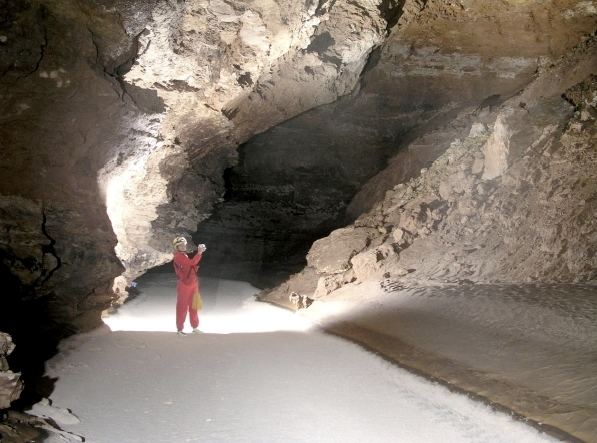 | ||
Snowy river cave
Snowy River Cave is a cave passage within Fort Stanton Cave in Lincoln County, New Mexico, obtaining its name from a stream bed of white calcite.
Contents
- Snowy river cave
- Fort stanton snowy river cave national conservation area
- Geology
- Hydrology
- Biology
- References
Fort stanton snowy river cave national conservation area
Geology
The bed of Snowy River is covered with bright white calcite. Over time, ancient, slow moving ground water dissolved the limestone walls of the cave and, with the help of microorganisms, recrystallized limestone into the white-colored mineral. Since prehistoric times, ground water saturated with dissolved calcite has periodically flooded the cave, followed by extended periods of dryness, leaving behind coatings and deposits.
The Bureau of Land Management reports that Snowy River may be the largest continuous cave formation in America.
Hydrology
Discovered in 2001, Snowy River is a section of a much larger cave complex. Researchers and explorers have not yet determined how the formations relate to the geology and hydrology. After visits to the dry riverbed in 2001, 2003, 2005, explorers were surprised to find Snowy River flowing with water in 2007 and also in 2010 after a heavy winter snowfall. The non-profit Fort Stanton Cave Study Project group has a long history of work in the cave.
Biology
From crusts on the cave walls, antibiotic-producing actinobacteria and some 36 strains of manganese-using bacteria have been discovered. New Mexico Institute of Mining and Technology says the organisms live in this isolated environment by chemically breaking down manganese compounds, creating reconstituted mineral byproducts in the process that may have pharmaceutical uses. Scientists anticipate new biological as well as geologic discoveries will be found.
